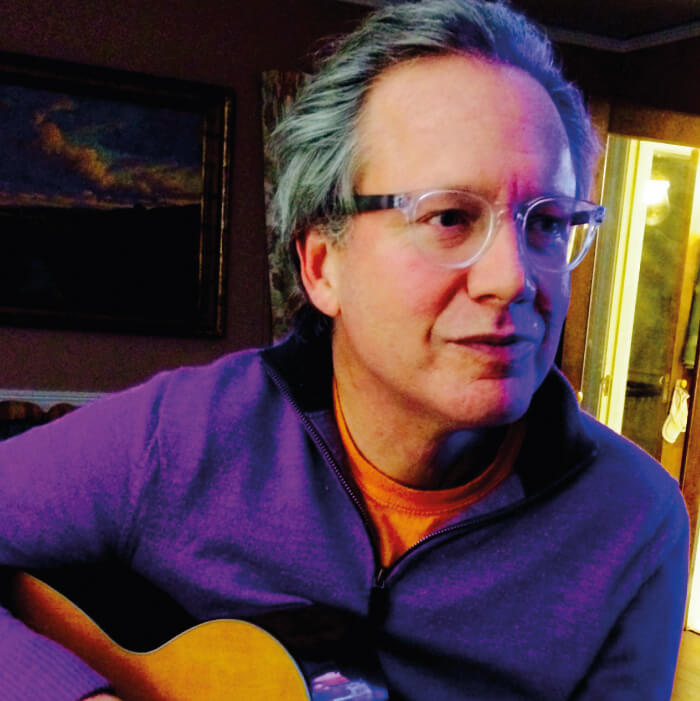My dad taught sculpture and art history, so it was natural that my first interests were in the humanities. I started college as a music major, but took some classes in science and math – and I was fascinated. When I learned that you could go to graduate school for free if you studied chemistry, my fate was sealed!
I joined Peter Armentrout’s lab for my PhD to study transition metal ions in gaseous reactions. Coming to science rather late, I lacked much of the background knowledge of my graduate student peers, but Peter and his students soon brought me up to speed. Peter takes real joy in getting things right and he soon instilled that in me.

Through the years, I’ve met many people with overlapping interests in math, chemistry, and music, so it’s not as unusual as you might think. I was lucky enough to play guitar in working bands as a college student and was able to pay for some of my tuition this way. Growing up in a small community, the style of music depended upon what instruments the members of each group could play, and making the most of the abilities of others is something I have carried through into my science.
I went to Japan as a Japan Society for the Promotion of Science postdoc and studied laser-induced fluorescence in flow tubes. When I returned, I joined Martin Jarrold’s lab at Northwestern and used drift tubes to get structures of carbon clusters, but at that stage I was using MS purely as a physical technique. I really started thinking about the combination of ion-mobility spectrometry and MS as an analytical technique when I started my assistant professor post at Indiana University in 1995.
Around Christmas 1997, we made the first nested ion-mobility time-of-flight (TOF)-MS measurement, which gave us cross sections and masses in a single experiment for all of the ionizable components of a mixture. My colleague, Jim Reilly, encouraged me to patent our technique, which ultimately led to the invention of parallel dissociation, and became a part of the MSE technology now sold as “high-definition mass spectrometry” by Waters Corporation. The large capacity and high speed of our technology was clearly useful (at least in our minds) for analyzing complex mixtures. This made the emerging omics revolution a target for applications of our measurements.
Luck is a big component, but it is also the environment at Indiana – there are so many talented students. Students really drove the development of the technology. Parallel disassociation is a great example – Stephen Valentine (then a student of mine) saw the potential long before I did. After I dismissed the idea for the third or fourth time, he pasted a spectrum on the door of the laboratory that I went into several times each day. It wasn’t until months later when Ryan Julian, then interviewing for a post-doctoral position with Martin and me, walked through the lab and pointed out that the fragmentation pattern was entirely different from typical CID, that I finally understood what Stephen had done. It’s a little embarrassing to think about the number of times my students have led me to a breakthrough.
In some ways, we’ve advanced quickly, but in others, we’ve just begun; we have a blueprint but we don’t know what all of the different components do or why they are valuable.
The problem I have been looking at recently is how exosomes transmit information between cells through the blood. Martin Jarrold has invented the first type of MS that can measure exact charges (charge-detection mass spectrometry; CDMS). Once you have the exact charge of a molecule it extends the mass range into the mega-Dalton or giga-Dalton region, allowing us to measure the masses of exosomes. Meanwhile, Milos Novotny has figured out how to pull urinary exosomes out of solution, purify them and concentrate them. There’s a lot to learn about these vesicles – back in the 1960s, they were thought to be junk carriers, and now it is looking more and more like they may be another way of controlling function within organisms. They carry genetic information between different organs and perhaps organisms – nature’s gene therapies.
I think we will increasingly be able to look at large ions. Martin Jarrold and I have a grant to put a drift tube on the front of the CDMS instrument I mentioned earlier so that we can gather information about the shape, exact charge and mass-to-charge of very large molecules – viruses, extracellular vesicles, lipoproteins, nanoparticles, and environmentally relevant molecules such as soot and small plastic particles. That last idea – small plastic particles in the 10 to 100 nm size range is going to be a huge problem as big pieces of plastics decompose into smaller particles. Anyway, I think the combination of ion mobility with CDMS is likely to have a future in these areas.
There’s also a lot to do with small ions. There are a couple of new technologies – instruments from Waters and Bruker, and Dick Smith’s SLIMS technology – that will go to very high resolution. Here, ion mobility gives you a quick way to look at subtle differences in molecules that otherwise have the same mass.
I think IM-MS is in a good place and I imagine there will be a drift option included with every mass spectrometer in the future – the applications are limitless.




